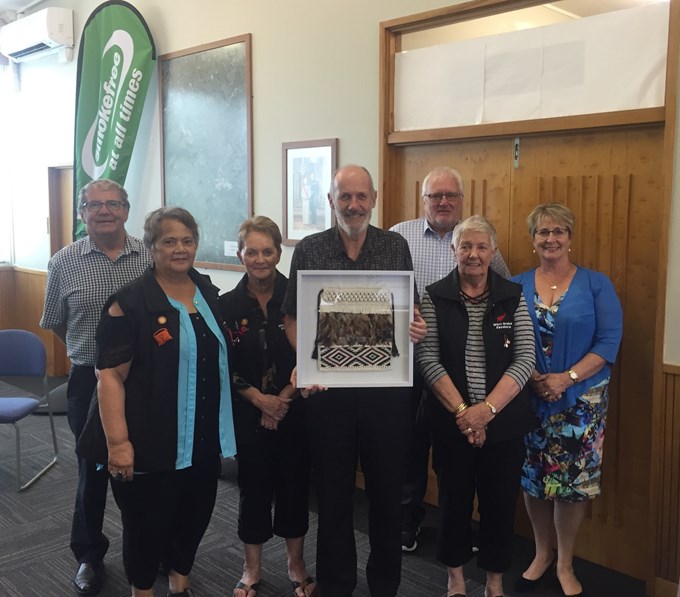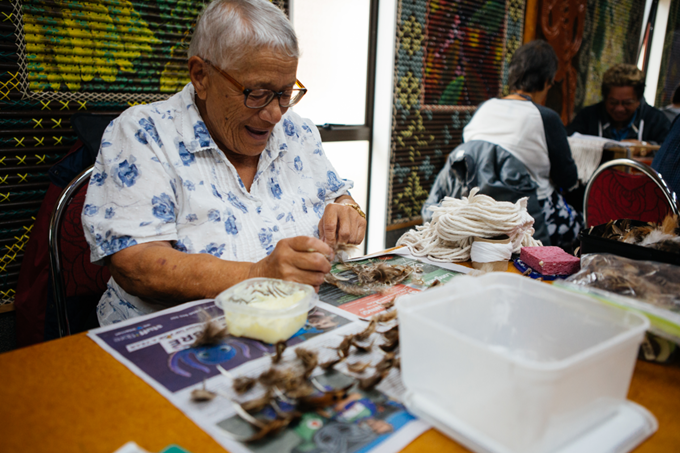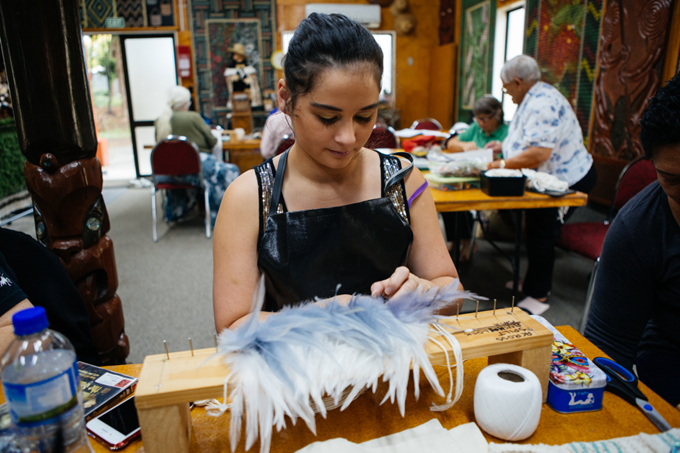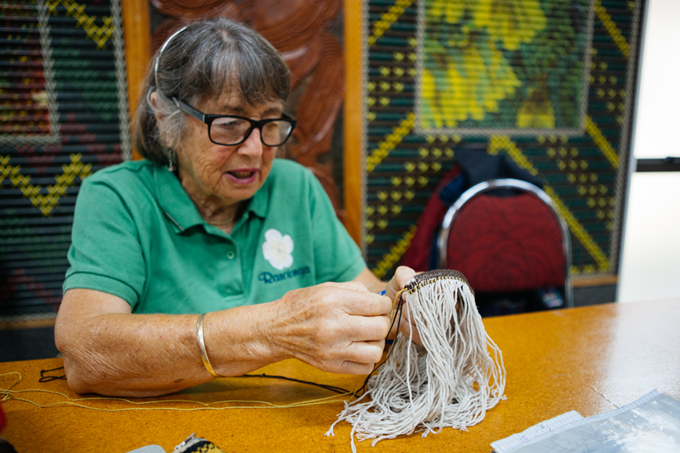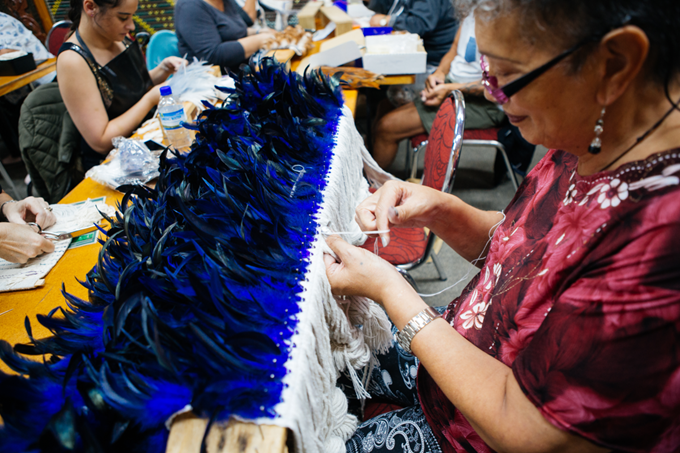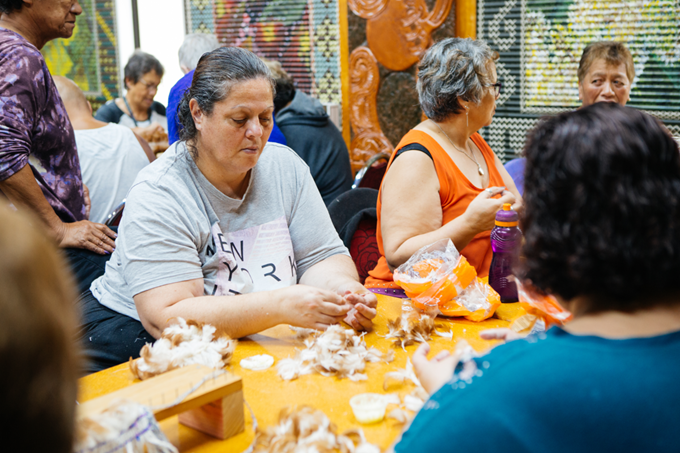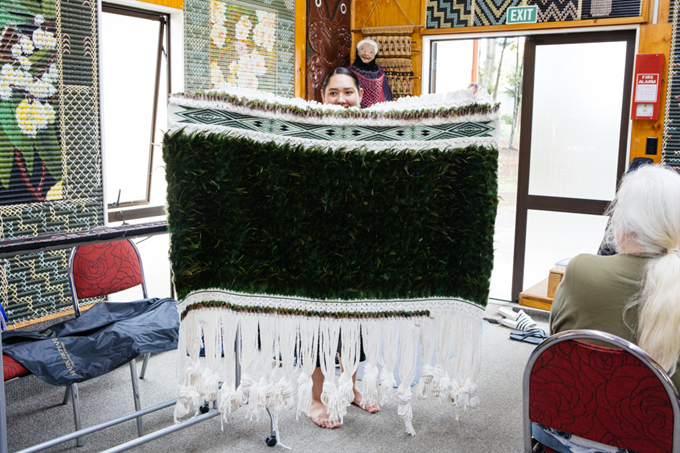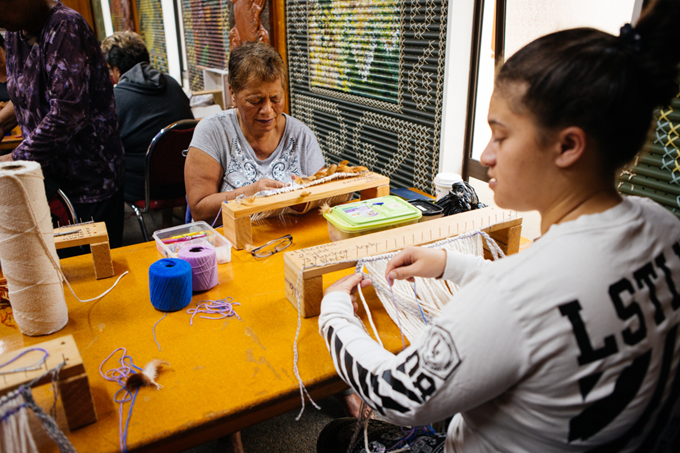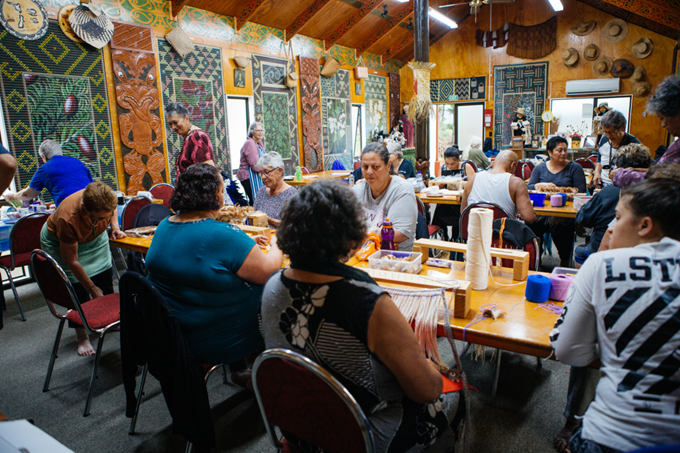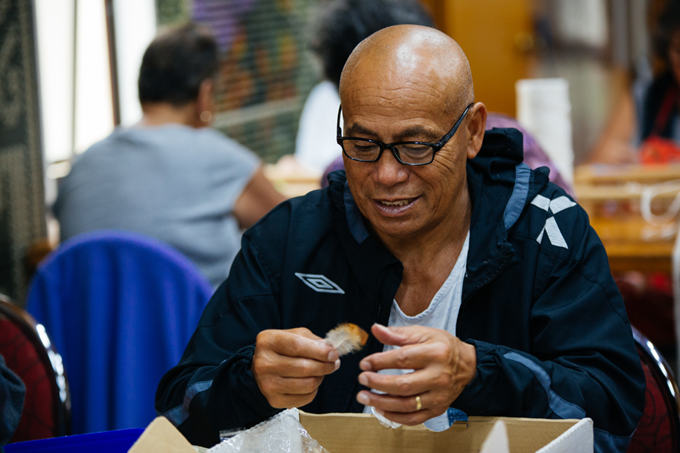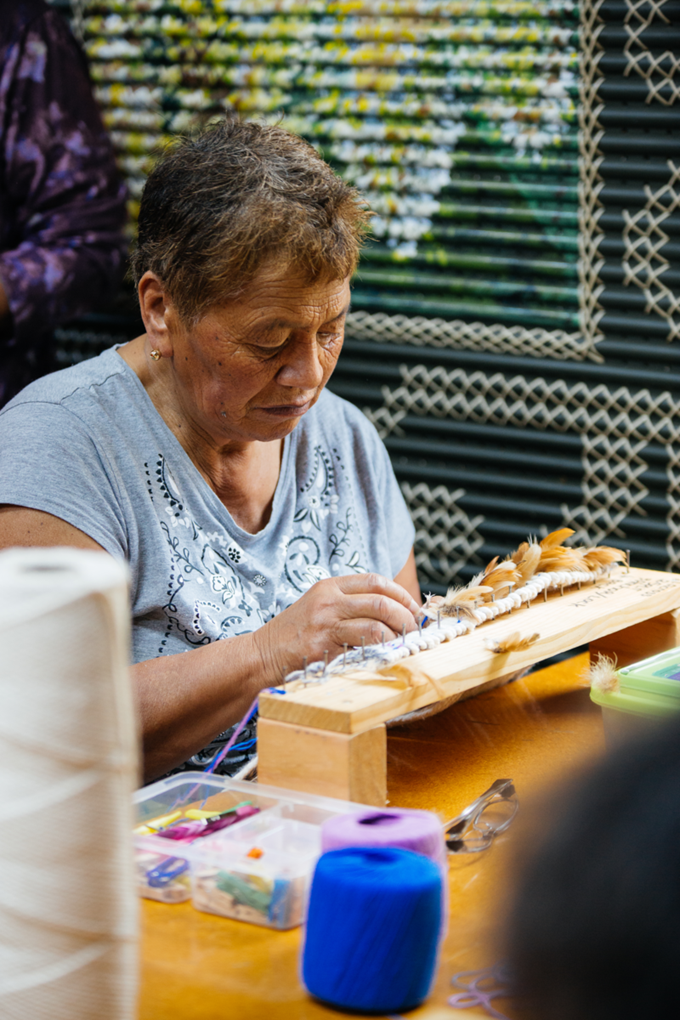Every Monday morning at Papakura Marae the work of angels is undertaken.
Seated in the whare are the women, and the odd man, committed to learning the ancient craft of korowai making.
They call themselves Whiri Aroha – Weave With Love, and that’s evidenced in the Anahera korowai – angel korowai, they make.
These beautifully crafted tiny korowai are destined for Middlemore Hospital’s bereavement care service, where distraught parents, regardless of ethnicity, are offered the Anahera on the loss of their pēpē.
The angel korowai wrap baby, surrounding it with love, as whānau grieve. Many parents choose to keep the korowai, others leave it with their baby.
Acknowledging traditional skills
Every skill that is passed on is done with acknowledgement to “the originals”, Bella Dixon and Christine Smith.
Conducted under expert tutelage for 17 years, the course has hundreds of graduates, and tutors like Ida White and Christine Smith and other kaiāwhina have even traveled to Perth to teach groups there the ancient skill.
There are tributes all over the internet from graduates who have gone on to exhibit at galleries, create businesses, make korowai for family members, and from teaching groups of their own.
"It takes a lot of patience, but anyone can master the skill," Ida White says. "Learning on the Anaherea korowai is part of who we are at Whiri Aroha. It’s about making something with love and sending it as koha to someone you will never meet, but who needs to be shown love at a terrible time."
The delicate feathers used mostly come from chickens these days, but one graduate even started a business supplying materials, including coloured feathers to weavers.
Love and learning
On the beginners' table group members are dipping their fingers in soap and rolling the feather bases tight so they can be interwoven into the intricate designs.
"Everybody has to learn everything," Ida says. "But you have to watch these women, they are talkers," she says, as the group erupts in laughter and replies with its own banter.
"It’s all about love, learning, keeping something precious alive for future generations. It’s Whiri Aroha."
Just down the road Kimberley Enoka has taken the skills to Otara Library, where she runs a course every Saturday morning, and just up the road in Pukekohe Emily Whyte is hard at work too.
A course graduate, she’s been passing on what she learned for a decade.
"In 2007 I went back to Papakura, got my certificate and I asked if I could take my knowledge to Pukekohe. They were 100 per cent behind me."
She thinks she has taught more than 500 locals.
"It's a beautiful part of our culture. It's important to keep it alive."
South Island connection
The skills of Whiri Aroha have also extended to the South Island, where graduate Robin Hill is teaching several groups and has also written three books to record the craft and make it easier for students to access patterns and information.
"Many thanks go to my tutors Christine Smith and Ida White at Papakura Whiri Aroha Group where I learnt the basic techniques and gained so much knowledge from the weavers.
"They welcomed me and have never stopped encouraging me. I’m also grateful to them that this ancient art, passed down through the ages has now been allowed to be learnt with modern materials, which makes it accessible to all."

